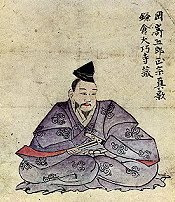Boss Battle - Adamantoise
Technically the first boss that you'll face in FF2 is the Sergeant that confronts you in the Semite Falls Mines, but much like your encounter with Garland at the beginning of FF1 the Sergeant is really just an idiot proof test. If you can find the attack button you can defeat him, especially with Mindu in your party offering you the full range of white magic. Adamantoise, the snapper turtle with a Wolverine-esque shell awaits you at the end of your quest for the Goddess Bell, however, and the unwary adventurer could easily lose a finger or two to his snapping maw.
You may have noticed that when Mindu first joined your party he brought with him a valueable ether. The savy player will have taken said either away from Mindu before he has a chance to leave your group, and if you've arrived at the battle agains the Adamantoise without any remaining MP that ether may be your life saver, as the hungry turtle takes virtually 0 physical damage. He also hits like a two ton truck, and needs to go down fast if you want all of your warriors to survive the fight. Fortunately he's extremely vulnerable to ice, so open up with a few spells and he should go belly up, and everyone knows turtes can't roll over.



